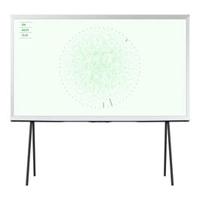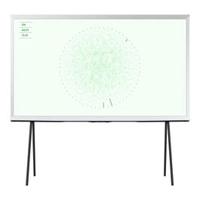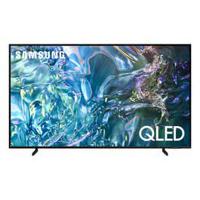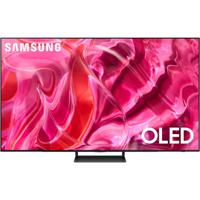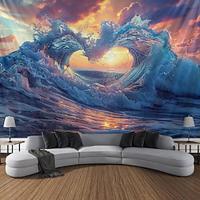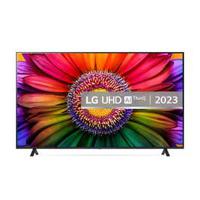About LCD TVs
With decreasing price points and performance improvements, the LCD TV is now the dominant type of television being sold. However, do you know them well? Do you think they are your only choice? Well, this article aims to guide you through their purchase process and also unveil some essential facts about them.
The invention of television itself was the result of many inventors, engineers and scientists. In 1888, an Austrian botanist and chemist, Friedrich Reinitzer first discovered the liquid crystals. He found it in cholesterol extracted from carrots. Further, in 1962, Richard Williams, an RCA researcher, generated a stripe pattern in a thin layer of crystal material. He did that by applying a voltage to it. The striped effect, now known as ‘Williams domain’, was the result of electrohydrodynamic instability. According to IEEE, a team of researchers and engineers at RCA, led by George Heilmeier with Louis Zanoni and Lucian Barton devised a method. This method was for the electronic control of light reflected from liquid crystals. With this, they demonstrated the first liquid crystal display. Their work launched a global industry that now produces millions of LCD TV.
Understanding the inner workings of an LCD TV
Indeed, it is fascinating to know that the simple LDC TV that we have in our living rooms is a result of such massive efforts. But, have you ever been curious about what this LCD is? Well, let us enlighten you a bit. It is typically a flat panel television. Moreover, it utilises the same underlying liquid crystal display technology. The LCD panels come with two layers of glass-like material. They are polarised and glued together. One layer comes with a special polymer coating that holds the individual crystals. An electric current is passed through individuals crystals. This allows the crystals to pass or block light to create images. The LCD’s don’t have the light of their own. Hence, an external source such as fluorescent or led light bulbs is required for you to see the images.
Essential features of LCD TVs
As a buyer, the screen size of any television is of paramount importance. Obviously, you, as users, will generally fancy the largest LCD TV out there. And that’s good. Because the bigger the screen size, the better. However, ideally, you must decide on the screen size depending on the available size and space. Two to five feet is the accepted distance for a 20-27 inch LCD TV. Moreover, the resolution or the picture detail determines how finer and sharper your picture quality is. Better the resolution, the sharper your image will be. That is, an average TV offers a minimum pixel resolution of 1280×720. Furthermore, the contrast ratio is another fundamental factor to consider while buying an LCD TV.
Advantages of LCD TVs
It is much more advanced than its CRT counterparts. They not only are significantly brighter but also feature higher contrasts than the CRT monitors. Also, a 15-inch flat-panel in LCD TV gives the same viewable screen like a 17 inch CRT monitor. That’s why it is easier to watch LCD TV than CRT’s. Moreover, they come with an improved LED backlighting systems. This enables better black levels. Besides this, they offer a brighter and more energy-efficient TV performance. Furthermore, there is a direct view mode, and they are only a few inches deep. Also, since their extremely lightweight, you can place these LCD TV without stand. That is, you can wall mount them and save space.
Disadvantages of LCD TVs
Like any other electronic device, the LCD’s too have their downsides. The LCD TV has problems producing true blacks. That’s because some light always passes through. This happens when the light passes through an LCD cell. Therefore, the best blacks on an LCD TV is always very dark grey. Moreover, because of the way light passes through an LCD cell, the direct-view LCD TV has a narrower viewing angle than a plasma TV typically. Apart from this, the low- resolution LCD TVs different exhibit pixilation. Also, the screen-door effects when blown up to big screen sizes. That’s why we recommend you to use the model with XGA (1,024 x 768) or higher resolution. This ensures reduced screen-door effects.
LCD TV vs computer monitor
You might play computer games on your HDTV or watch TV shows on your computer monitors. It isn’t a big deal. However, remember that it does not make them similar. TVs have features not included in monitors and Vice a Versa. However, they do have a lot of things in common. When it comes to size, the TV screens are much larger than the monitors. The TV size can go up to 50 inches while monitors usually remain below 30. Moreover, the ports on an LCD TV and monitors differ in terms of their functionality. For example, you can power a device that’s connected to the USB port of an LCD TV. But, in case of monitor USB, the power it generates is different though you can use them to load a flash drive.
LCD TV vs plasma
Plasma and LCDs share one thing in common. That is, they are both thin and flat, and you can wall mount them. But, inside those thin and flat cabinets, you’ll see different technologies being used to display images for TV viewing. Plasma TVs use pixels with self-emitting phosphors to produce images. Therefore, their advantage over LCD TV is that you can turn on and off, each of these phosphors. This, in turn, provides deeper blacks. But, on the other hand, plasma TV’s cannot create images as bright as an LCDs. Moreover, plasma TVs are often subjected to burin-ins, especially if a static image is displayed on the screen for a longer period. Furthermore, the screen surface of plasma TV is more reflective than most LCD’s.
Tips on how to buy LCD TVs online
So, have you decided to buy an LCD TV? Even after the core technological discussions above? Well, then know that buying a perfect LCD is not that simple. There are several other factors to consider before you are out on a hunt to purchase your television. Here are a few fundamental things you must consider when you want to buy the best LCD TV for yourself. Keep reading!
- Seating distance and screen size – Of course, you love the big and bulky TV screen size. But, remember that not all sizes fit your space. Therefore, always consider the size of your room and the seating distance between your TV screen and your couch or bed. Ideally, a 20-27 inches screen size requires 2ft-5ft range.
- The angle of viewing – One of the significant weakness of an LCD TV is that they have a narrow viewing angle. In other words, you’ll get the best results only in the centre seating position, precisely 30 to 45 degrees at the centre seating position. However, if you move farther away to either side of the screen, you’ll experience colour shifting and picture fading. Plasma and OLED’s are less prone to this problem.
- Curved or flat screen – LCDs are usually flat screens. However, Samsung still makes a few models with a curved screen. But there are still certain features to consider when you opt of curved LCD TV’s. For example, you must look into their susceptibility to room glare and viewing angle. Not all curved screens give you an excellent viewing experience.
- Sound options – All LCDs come with built-in speakers. But the sound quality is not that great. If you find yourself stuck in such a situation, then it is best to connect the TV to external speaker systems. This way, you’ll have the desired sound quality. All LCDs allow you to connect them to an external audio system except a few models.
- Resolution – Full HD resolution is available on many LCD TV’s and their other counterparts. While buying a television, this feature allows you to view content or imagery that has specially coded with enhanced brightness information. Moreover, you’ll get to see your movies, videos and pictures with extreme sharpness.
- Various price points – True that the LCDs are still popular. That’s because they have had technological improvements and also price variations. Today, you’ll find the LCD TV price in several different ranges. From LCD TV lowest price to the highest with distinct features, you’ll find them all. Also, a few popular brands like Videocon, Haier, and Hitachi offer amazing deals and provide LCD TV for sale.
The bottom line is that LCDs have a distinguished place in the history of televisions. They are the nostalgic technology that gave birth to many other advanced televisions. Developed over five decades back, their practicality and popularity peaked in the 19th century, and since then they’ve never looked back. These days, you’ll find televisions such as Plasma, OLED, QLED and more, but none can entirely replace the basic LCDs.
Question & Answer
Can an LCD TV screen be repaired?
If you are going to repair the LCD screen, you must first understand the problems that caused the damage. Although the most likely issue is a broken screen, there several other issues such as picture lines or black spots, or image distortion. If the damage to the screen has not gone past the screen, not into LCD or LED, then fixing the screen TV is possible. You can get the required parts. However, if you have severely damaged the screen, then it is best to replace them than repair. As their repair will cost you more.
Can LCD TV lay on its side?
Yes, it is okay to lay your LCD TV on its side. Just make sure you do not lie them face down. The packaging and boxing of the TV’s are designed in such a way that you can store them vertically on top of one another. But too much pressure and rough handling will crush the screen. That’s because the screens of LCD TV is flimsy. Therefore, it is best to store them vertically, than sideways. You must also ensure that the packaging is done right to avoid any severe damages.
Where to recycle LCD TV?
Surprisingly, disposing of an LCD TV isn’t as easy as you think. Most cities have different rules to dispose of electronic waste. However, the proper way to dispose of the television set is to either give it away or dispose of it through E-waste recycling centre. Check online various E-waste recycling centres in and around your city. Know the hours of the recycling centre and then drop off your television. Remember to disconnect any cords from the LCD TV that may be of use to you.
Where to buy replacement LCD TV screen?
Of course, damages do occur, and you may require replacements. If you want to replace your LCD TV screens first checkout its brands. If you are under the warranty period, you’ll get it replaced by the authorised brand itself. Most popular brands offer screen replacement service under warranty period. Also, you can request the respective brands for a replacement even if you are out of the warranty period. It is just that; you might have to pay them extra.
What LCD TV brand is the best?
LCD TV’s are very popular, and you can buy them from some of the famous brands like Samsung, Toshiba, Sony, LG, Panasonic, Philips, and Sanyo. All of them offer an extensive collection of high-quality LCD’s with distinct features. Apart from LCD’s you’ll also find other advanced versions of these televisions . OLED, LED, Plasma are few such examples. And if you want to avoid the hassle of visiting every site individually, then check out Shops.ae. You’ll get them all at one go!
So, are you up and ready to purchase that perfect LCD TV for your space? Yes? Well, then do not hesitate to browse through our product search engine . It features a wide array of television sets, that include LCD, LED, plasma, OLED and more. Moreover, you can purchase them from popular brands on 500+ online stores.

